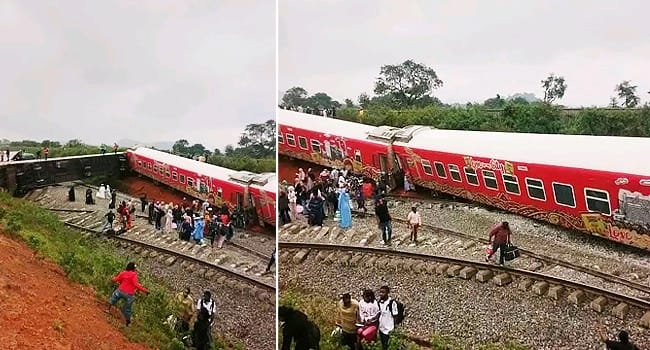The Nigerian Safety Investigation Bureau (NSIB) has, in its interim report, pointed to “systemic neglect and technical failures” as the primary causes of the recent Abuja-Kaduna train derailment near Asham Station.
This contradicts the Nigeria Railway Corporation(NRC)’s report in the immediate aftermath of the accident, which attributed the derailment to human error, excessive speeding, and misapplication of the emergency brake system.
However, the NSIB’s preliminary report, which was released on Wednesday, September 24,2025,paints a very different picture.
According to the Bureau, the derailment which occurred occurred on August 26, 2025,
was largely linked to neglected infrastructure, including a broken point clip and an unserviceable automatic switch mechanism at Asham Station. With the equipment inoperative, railway staff were forced to manually operate and lock the switch — a risky procedure that set the stage for disaster.
The NSIB revealed that several damaged track sleepers—remnants of a previous mishap—had been inadequately patched rather than properly replaced.
“This kind of makeshift repair undermines the structural integrity of the railway system,” the Bureau stated.
Additionally, investigators found that the automatic switch mechanism at the crossing was non-functional at the time of the derailment. Due to the failure, railway staff were forced to manually operate the switch and secure it with a point clip, which was later discovered to be broken.
This, according to the report, “led to a misalignment in the track, ultimately resulting in the derailment.”
It marks the second derailment at Asham Station in just over a year, highlighting deeper issues in infrastructure management.
The NSIB also flagged critical shortcomings in staff training and resource availability.
“NRC personnel had only undergone basic training, with no evidence of refresher programmes” the report said, raising concerns about the preparedness of frontline railway workers.
The Bureau further noted a shortage of essential operational tools and a lack of access to replacement parts from the Original Equipment Manufacturer (OEM).
Although the accident left 21 passengers injured, there were no reported fatalities among the 618 people on board.
In response to its preliminary findings, the NSIB issued a set of urgent recommendations. These include:
Replacing all weakened or damaged sleepers along the affected route.
Installing fully functional, OEM-standard point switches across the Abuja–Kaduna corridor.
Restoring all monitoring and communication equipment to OEM specifications, including CCTV cameras, clocks, and control systems.
Instituting mandatory refresher training for all operational staff to enhance response capabilities and ensure adherence to safety protocols.
“The restoration of critical infrastructure and retraining of personnel are essential to prevent a recurrence of such incidents,” the Bureau emphasised.
The NSIB clarified that the findings were still under review and that a final report would be released after further analysis.
As part of the ongoing investigation, officials plan to:
Conduct a technical audit of the turnout and switch mechanisms at Asham Station.
Examine the track alignment and condition of the broader infrastructure.
Inspect the locomotives and derailed coaches, focusing on systems like brakes, wheels, and bogies.
Analyse operational data, including signal logs, speed records, and communication transcripts.
Review testimonies from the train crew and gather eyewitness accounts from passengers.
Perform a detailed analysis of the broken point clip, believed to have contributed significantly to the derailment.
The NSIB’s final report is expected to deliver more in-depth conclusions and a broader set of recommendations aimed at improving rail safety in Nigeria.


